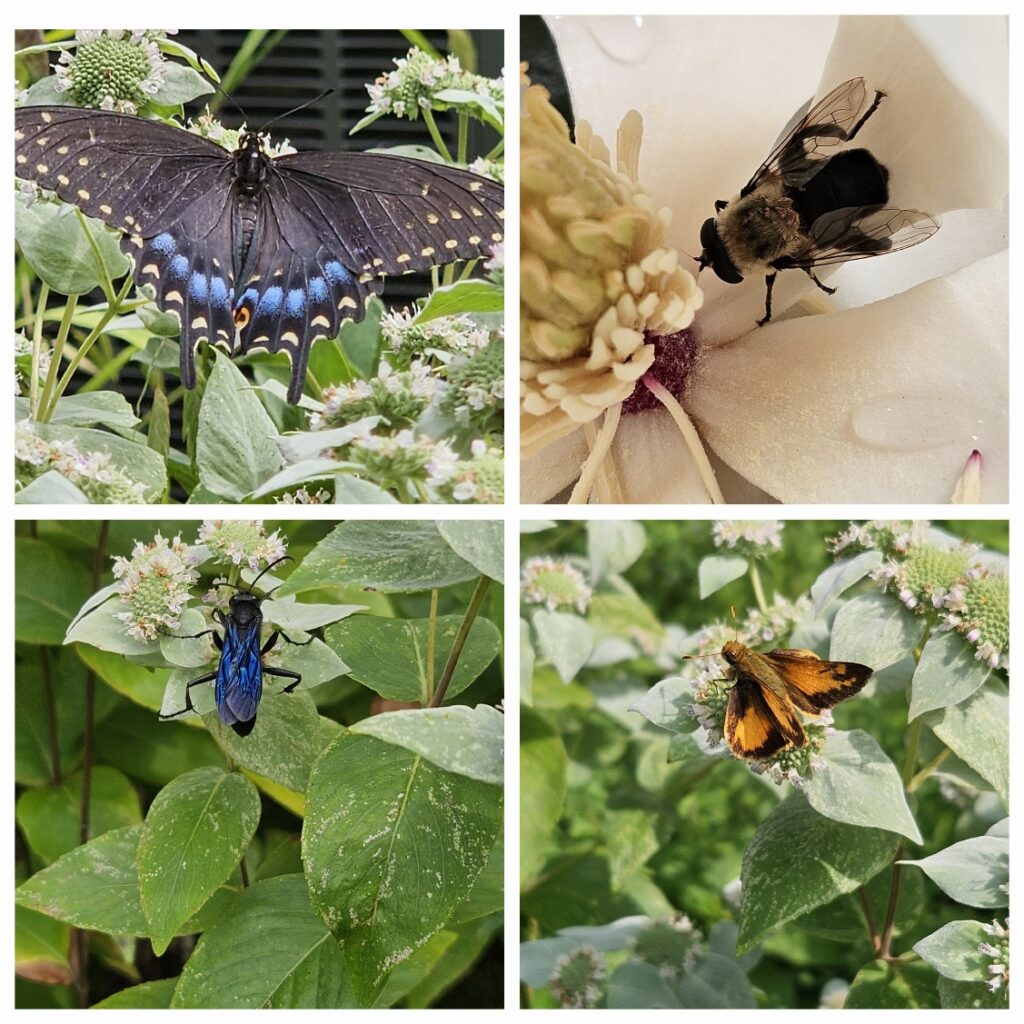On Sunday, July 21, twenty Wild Ones Louisville members and guests drove out to meet Beate Rose, our
garden tour host, who lives in a typical tidy neighborhood in Simpsonville, one with residential homes
surrounded by neatly mowed lawns dotted with shrubs and an occasional tree. There was no need to to
closely scrutinize the numbers on her street to find her home, diversely-colored flowers in well-defined beds
signaled which was hers!
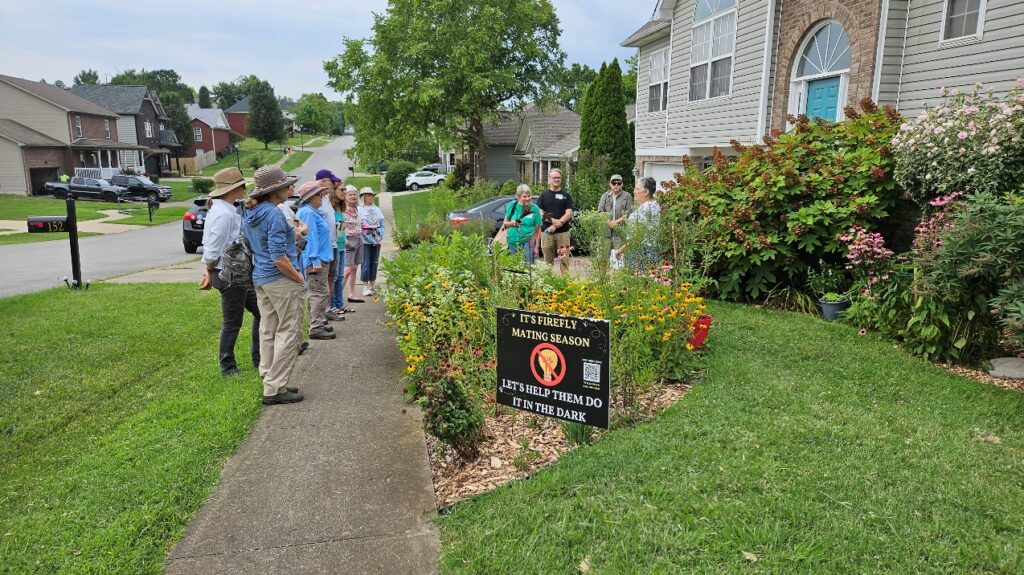
Many of us were surprised to see so many native plants in the front of a neighborhood such as this and were curious about whether she has had any push-back from her neighbors or neighborhood association. We were happy to hear that the answer was quite the opposite! She said that sometimes when she is working out front, cars slow down and people call out to say how beautiful the flowers look!

As we examined the types of plants she had out in the front bed, the secret to that response became apparent. Many of the plants out front were native cultivars! Cultivars are very often chosen from the native gene pool of plants for their short, compact and bushy characteristics. And then they are cloned for predictability and sold. Therefore, these plants don’t grow scraggly and tall or varied in size, features that some people do not want, particularly out in the public part of their gardens- the front yard. This could well be a working compromise for us native plant lovers who feel that they can’t grow much out front for fear of neighborhood complaints. Beate also described how she achieved such a colorful and pretty front garden bed. She first started with a very small area- about 3 x 3 feet, then she decided to expand it bit by bit and making into a semi-circular shape (curves are always prettier). She was also unafraid to take out any plants that she regretted having, either because they were not pretty enough or got too unruly for her to maintain. So, I concluded that bit by bit, she got her neighbors used to seeing a flower bed out in the front yard and didn’t overdo the plantings at first as she learned more about native plants and how much of her time it took to take care of them. Beate is definitely undaunted by experimentation!
We then moved on to the plantings alongside her driveway. And there she dared plant taller wild types of Ironweed and Cup Plant surrounded by natives of smaller stature, like Purple Coneflower, Liatris and Black-eyed Susan.
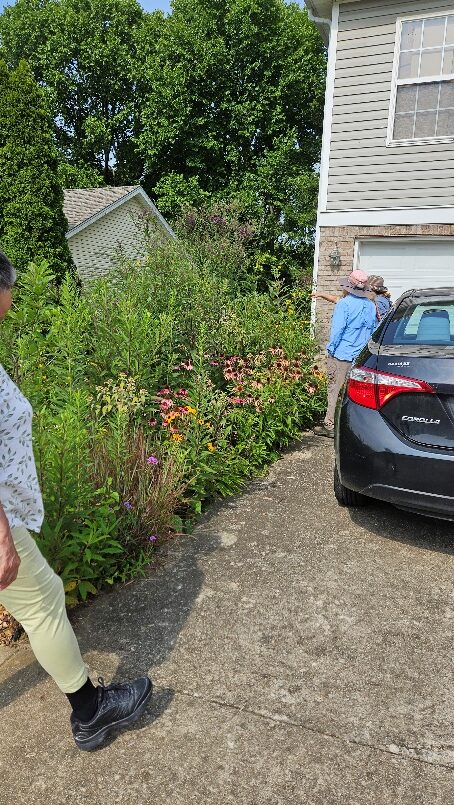
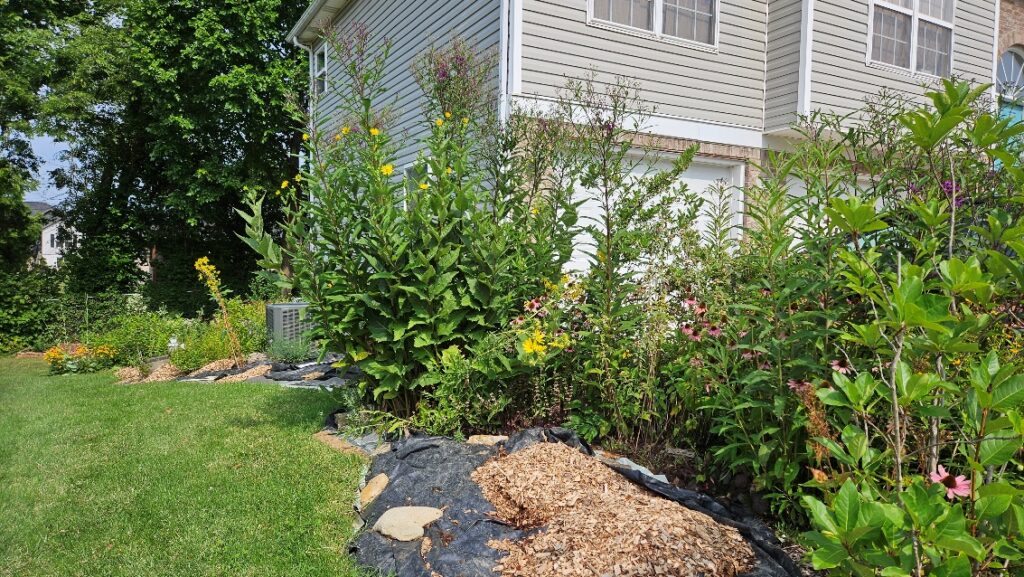
As we rounded the corner to the back of the house, we could see how she was extending beds out from a wooded area adjacent to her property. There she has been tucking in, amongst earlier plantings of non-natives, native spring ephemerals, which were, of course, not visible this time of year. Beate invited us to climb the stairs to a small porch so we could get a bird’s-eye-view of her beds, some in sun others in more shade. She took advantage of those conditions to plant many different natives with varying tolerances to sun and shade. But as she always says, sometimes she is not happy with the result and changes the plant palette around to suit her.
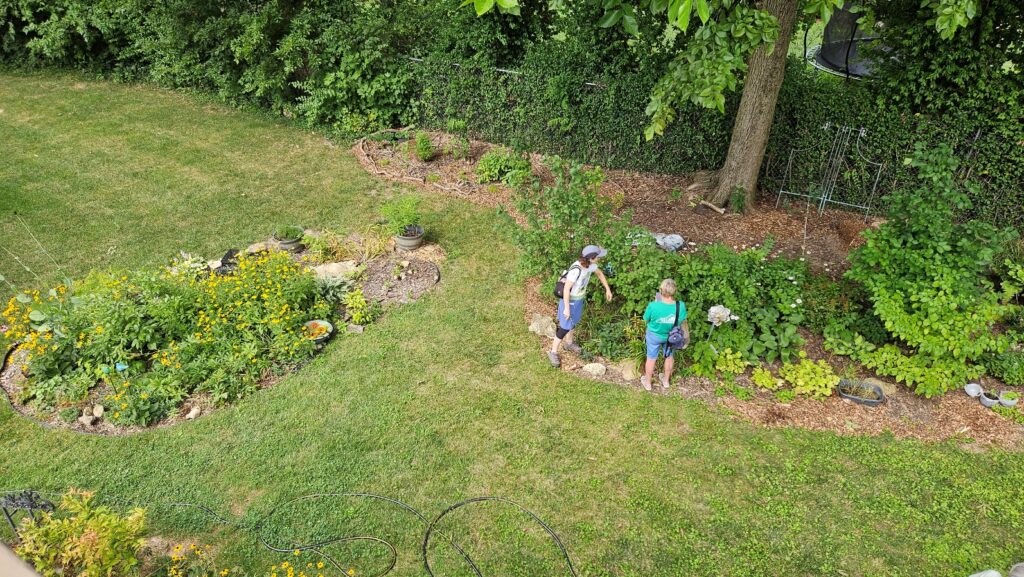
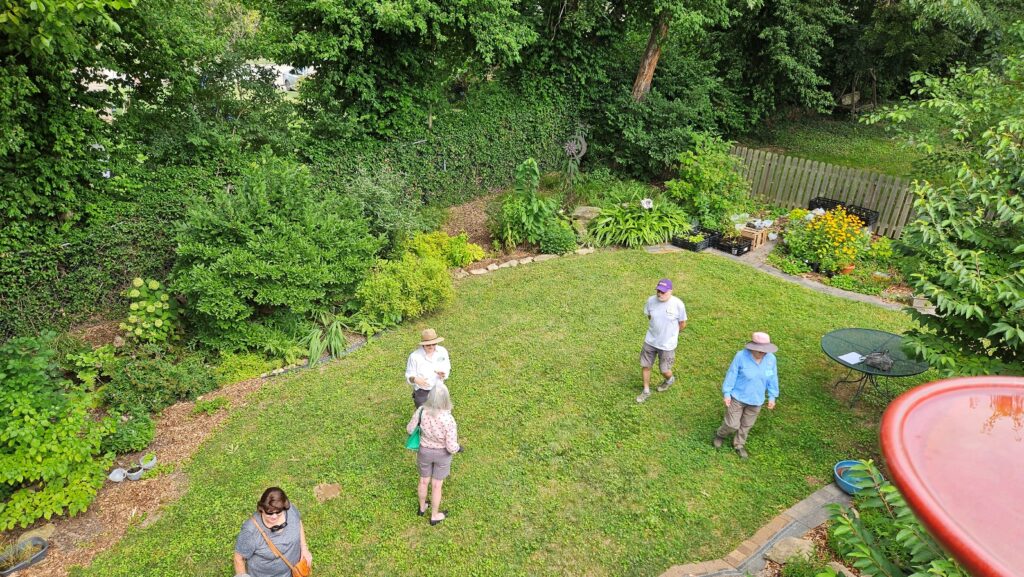
After about an hour of questions and answers and oohs and ahs from an appreciative group, she invited us upstairs on a porch landing to partake of some delightful refreshments, to which Jacquelyn added her famously delicious deviled eggs! Afterwards, we all left for home in dribs and drabs after an inspiring morning and shared camaraderie. But before leaving, I just had to take a few photos of some pollinator insects that came to visit, so I could upload to iNaturalist and share with you all as well! WON’T YOU JOIN US FOR OUR NEXT WOL GARDEN TOUR AT JACQUELY HAWKINS-McGRAIL’S HOME AUGUST 10? More details coming from Hart shortly. These garden tours are just one of the benefits you get if you become a dues-paying member of Wild Ones Louisville. You, too, could have members visit and show off what you’ve done and also get collective advice on what to do with problem areas, if you’d like!
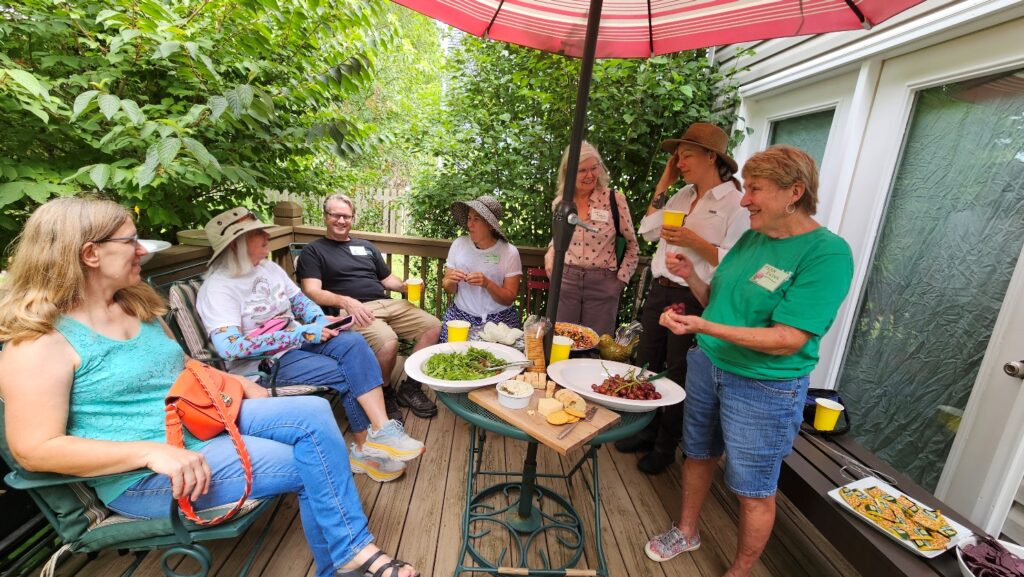
We sat out there in shifts, enjoying good food and conversation. Beate, our host, is seated in the center.
